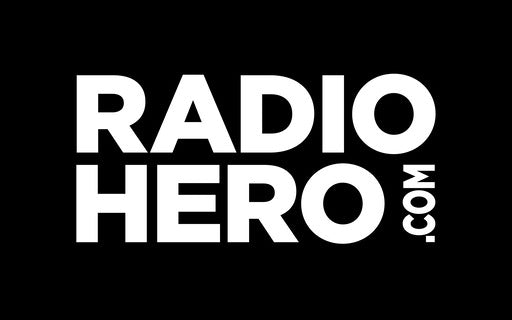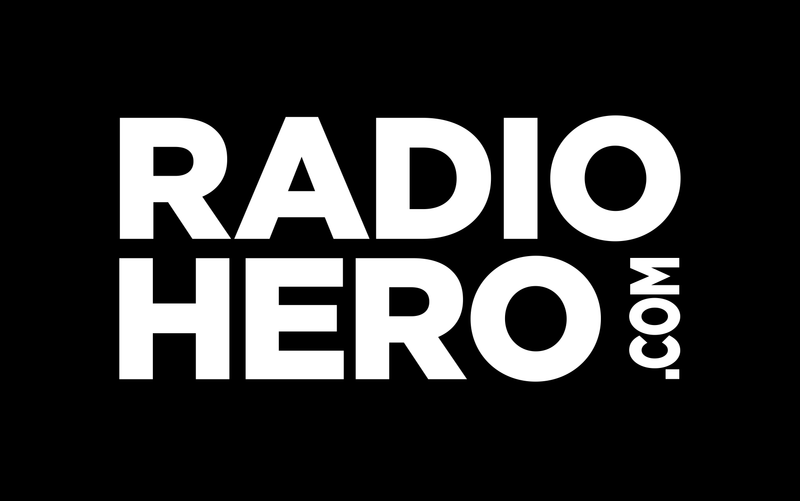Understanding the Impact of Professional Radio Ads on Businesses
Professional radio ads offer a unique avenue for businesses to connect with their audience, driving significant ROI when done right. Think of radio ads as not just commercials but as a direct line to potential customers. Even in the digital age, radio remains a staple in many people’s daily routines—during commutes, on job sites, and in offices. This constant presence gives radio ads the power to influence and persuade, shaping brand perception and consumer behavior in real-time. When crafted by professionals, these ads can capture the essence of a brand, distill complex messages into digestible bites, and evoke emotions, leading to increased brand recall and customer action. A well-executed radio ad campaign stands out, delivering concise, memorable messaging to a targeted audience. This targeted approach ensures that your ad dollars are not just spent but invested wisely, reaching the right ears at the right time. Moreover, the cost-effectiveness of radio advertising, compared to other media channels, adds to its appeal, especially for businesses aiming to maximize their advertising ROI while still making a significant impact.
Identifying Your Target Audience for Maximum ROI
Identifying your target audience is like aiming an arrow. Get it wrong, and you miss the mark, wasting both time and money. Get it right, and your radio ad can hit bullseye, driving sales up and maximizing your return on investment (ROI). First, think about who your current customers are. What do they like? Where do they live? How old are they? This information is your gold mine. Use it to shape your radio ad so it speaks directly to people like them.
Next, consider the station. Different radio stations attract different listeners. You wouldn’t play a rock song on a classical station, right? Match your ad with the station that your target audience loves. This increases the chance they’ll hear it.
Lastly, timing is everything. When does your target audience tune in? Morning commute? Evening drive home? Pinning down the best time to air your ad means more of the right ears hear your message.
Bottom line: Know who you’re talking to, pick the right playground, and show up at the right time. It’s not just about reaching people; it’s about reaching the right people.
Crafting a Compelling Message for Your Radio Ads
Crafting a compelling message for your radio ad is the real game-changer. Here’s the thing: you’ve got mere seconds to grab attention, persuade, and stick in the listener’s mind. So, what’s the secret sauce? First, know your audience. Like, really know them. Are they young folks or the morning coffee crowd? Second, clarity is king. Focus on one clear, simple message. Trying to say too much just muddles the whole thing. Third, stir emotion. People remember how you made them feel way longer than what you told them. Whether it’s laughter, curiosity, or nostalgia, hit them in the feels. Lastly, call to action, make it strong, make it now. Tell them exactly what to do next, like “Visit our website today.” Remember, you want them to act, not just listen. Keep it real, keep it focused, and watch the magic happen.
Choosing the Right Time and Station for Your Radio Ads
Picking the right moment and station for your radio ads makes all the difference. You want your message to hit the ears of as many potential customers as possible, right? First off, understand your audience. Who are they? When do they tune in? Morning and evening commutes are golden hours for radio. That’s when people are most likely listening. But it’s not just about timing; it’s also about location. Choose a station that matches your target demographic. If you’re selling trendy sneakers, a station that plays the latest hits might be your best bet. On the other hand, if your product is perfect for DIY enthusiasts, a talk station with a focus on home improvement could be a winner. Here’s the deal: it’s not just throwing your ad out anytime or on any station. It’s about smart choices. Do some research, maybe even chat with the stations. They often have insights and data on their listeners. This way, you’re not just reaching people; you’re reaching the right people at the right time.
Integrating Professional Radio Ads into Your Marketing Strategy
Getting professional radio ads into your game plan is more straightforward than it sounds, and it can pump up your business’s volume in the marketplace. First, pinpoint your target audience - the folks you want reaching for their wallets when they hear your message. Then, craft that message to speak their language, hitting on what matters to them. Next up, choose the right time slots. You want your ads playing when your audience is tuned in and attentive. Don’t forget to negotiate ad rates. Prices can swing based on time slots and audience size, so talk it out with the station. Lastly, track the performance of your ads. Keep an eye on sales and customer engagement following your ads’ airtime. This feedback loop will tell you what’s working and what needs tuning. By weaving professional radio ads into your marketing mix, you’re setting the stage for a sound boost in ROI.
Utilizing Expert Voice Talent for Enhanced Ad Effectiveness
Choosing the right voice for your radio ad is like picking the right spokesperson for your brand. The voice behind your ad can make or break its success. A skilled voice actor does more than just read the script; they bring your message to life, drawing listeners in and persuading them to take action. It’s not just about having a pleasant voice. It’s about finding a voice that aligns with your brand’s personality and resonates with your target audience. When you use expert voice talent, you tap into their ability to convey emotions and nuances that a standard speaker might miss. This connection can significantly increase your ad’s effectiveness, making listeners more likely to remember your message and act on it. Investing in professional voice talent might seem like an extra expense, but the boost it gives your ad’s impact is worth it. Think about the ads that have stuck with you over time. Chances are, the voice played a big part in that. Make sure your radio ad stands out for the right reasons by employing a voice that speaks directly to your audience’s needs and desires.
Monitoring and Measuring the Success of Your Radio Campaigns
To tell if your radio ads are working, you’ve got to keep an eye on them. It’s like knowing if a plant is growing—you watch, measure, and adjust as needed. Start by setting clear goals. What do you want the ad to do? More calls, website visits, or people walking into your store? Once your goal is set, use tools and methods to track your ad’s performance. Use unique promo codes or dedicated phone numbers that are only mentioned in your radio ads. This makes tracking who’s coming from where a breeze. Pay attention to your sales and customer inquiries during the campaign. See a spike? Good sign your ad’s hitting the mark. Don’t forget to ask new customers how they found you. If they mention your radio ad, you know it’s working. Bottom line, monitoring and measuring lets you know if your investment is paying off. If things aren’t looking great, tweak your approach. Maybe it’s the ad content, the time it airs, or the station it’s on. Keep refining until you see the results you’re after.
Leveraging Discounts and Negotiating Ad Rates
Getting the best bang for your buck with radio ads means understanding the art of leveraging discounts and negotiating ad rates. First off, know that ad prices are not set in stone. The secret? Radio stations are keen on filling up their ad slots, especially during less popular times. This is your in.
Start by aiming for off-peak hours. These slots are cheaper and open for negotiation. Think late night or early morning - times when listeners are fewer but the cost is significantly lower. Here’s where you can flex your negotiation muscles.
Don’t shy away from asking for package deals. Stations often cut deals if you commit to buying multiple ads over time. It’s a win-win. They get the assurance of sold ad time, and you get a discount.
Remember, everything is negotiable. Whether it’s the price, the slot, or the number of ads, there’s always room to haggle. But, go into these talks armed with knowledge. Know the station’s audience, the peak times, and what competitors are paying.
Lastly, consider barter agreements. Sometimes, you can exchange goods or services for ad space. It’s not traditional cash payment, but it’s a creative way to save.
In short, think outside the traditional payment box, aim for less competitive times, and never accept the first offer. Negotiating can turn a standard ad campaign into an incredibly cost-effective one.
Success Stories: Businesses That Elevated Their Presence Through Radio Ads
Big brands and small businesses alike have harnessed the power of radio ads to skyrocket their visibility and drive sales. Take, for example, the story of a local diner that once struggled to fill seats during off-peak hours. They decided to run radio ads featuring special deals during those slow times and saw an instant uptick in customers. The diner highlighted their unique selling points, like homemade pies and the best burgers in town, in a catchy jingle that listeners couldn’t get out of their heads. The result? They doubled their lunch crowd in a matter of weeks.
Another success story comes from a car dealership that was looking to increase foot traffic to its showroom. They launched a radio ad campaign focusing on their hassle-free buying experience and unbeatable prices. By targeting their ads towards morning and evening commutes, they capitalized on the times when people were most likely thinking about their vehicles and how to upgrade them. The dealership saw a 30% increase in showroom visits and a significant boost in sales over the next quarter.
These stories prove that when businesses get creative with their messaging and strategically choose their airing times, radio ads can be a game-changer in boosting their presence and achieving a strong return on investment.
Optimizing Future Campaigns: Learning from Analytics and Feedback
To make your next radio ad campaign perform even better, you’ve got to dive into the analytics and feedback from your past efforts. Here’s the thing - every ad you run gives you data. How many people heard it? When did they tune in? These numbers aren’t just for show. They tell you what’s working and what’s not. Look for patterns. Maybe more people listen during the morning commute. Use that. Schedule your ads when the most ears are tuned in.
But don’t stop at numbers. Feedback, especially from your target audience, is pure gold. Did they like the ad? Did it make them want to buy your product? Use surveys or social media to get these answers. Be direct but friendly. Remember, you’re learning from them.
Combine what the numbers say with what people tell you. Maybe your ad got a lot of airtime, but if folks found it boring, there’s a problem. Fix it. Change the script, or maybe just the time it airs. Keep tweaking and testing. This isn’t a one-shot deal. Optimizing future campaigns means taking what you learn, making changes, and never being afraid to try something new. Always aim for improvement. Your ROI will thank you for it.



